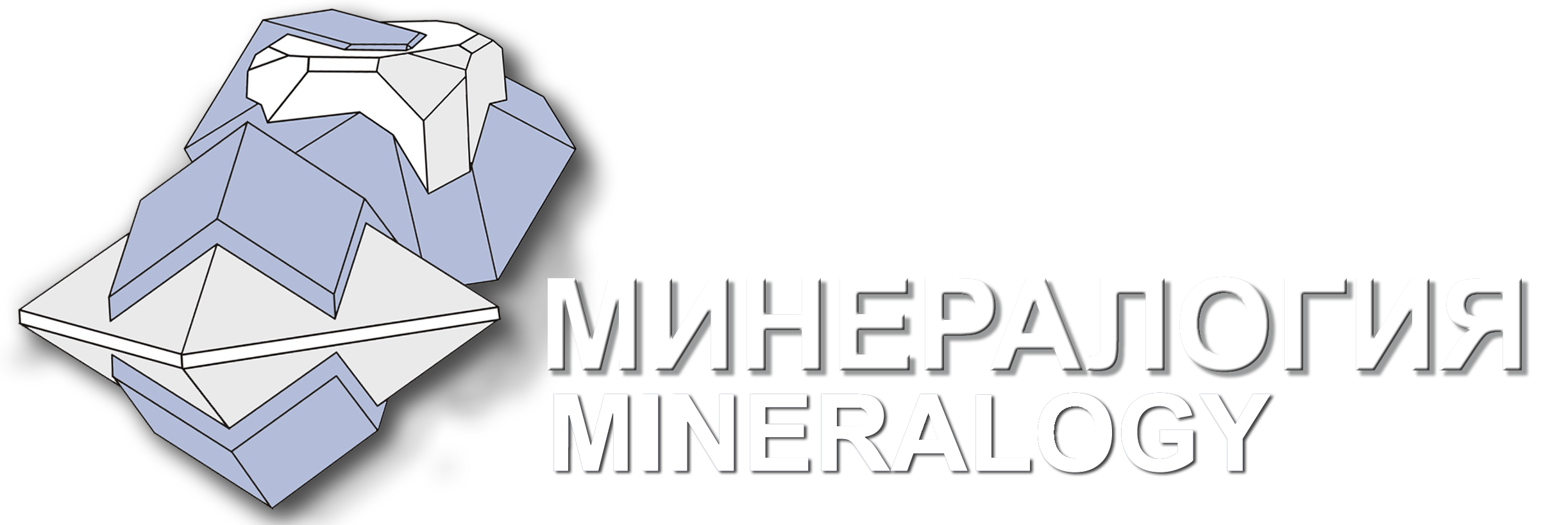Distribution of trace elements in growth zones and sectors of spodumene crystals (Pashki deposit, Nuristan, Afghanistan)
M.A. Ivanov, N. Hamdard, S.G. Skublov, V.V. Smolensky
UDK
| 549.642.27:550.42 | https://doi.org/10.35597/2313-545X-2024-10-2-3 | Read PDF (RUS) |
Regular distribution of several trace elements in spodumene crystals of the Pashki pegmatite Li deposits in Afghanistan (Nuristan province) is analyzed using secondary ion mass spectrometry (SIMS). Twenty seven local analyses of 19 elements were carried out in spodumene samples of different generations taken from pegmatites during feld works of 2023. We studied an early generation spodumene crystal from blocky spodumene-quartz-albite pegmatite and two late generation spodumene crystals including an euhedral crystal from a quartz core of pegmatite and a crystal extracted from a mineralized cavity together with quartz crystal, albite, and muscovite. It is found that the Fe, B, and Be content is signifcantly higher in the growth pyramid of the pinacoid face (010) than in the growth pyramid of the prism face (021). From early to late growth zones, the Be, B, Fe, and Mn content increases and the K, Rb and Ti content decreases. The heterogeneity of trace element composition of spodumene crystals thus mostly depends on their sectoriality, which is caused by different crystal chemical conditions of the incorporation of isomorphic trace elements into the mineral structure on faces parallel and perpendicular to the direction of pyroxene chains of Si–O tetrahedra along axis [001] rather than by their zonation. From early to late generations of spodumene, the content of most analyzed trace elements signifcantly decreases corresponding to the ideas about the change in the crystallization fractionation of elements during the evolution of the pegmatite process transiting from the closed to open physicochemical system.
Keywords: spodumene, lithium pegmatite, trace elements, SIMS method, zonation, sector, Pashki deposit, Afghanistan.
Confict of interest. The authors declare that they have no conficts of interest.
Author contribution. M.A. Ivanov and N. Hamdard – conceptualization, investigation, S.G. Skublov – analytical works, review & editing, V.V. Smolensky – visualization. All the authors took part in writing the text of the draft and approved the fnal version of the manuscript prior to publication.
For citation: Ivanov M.A., Hamdard N., Skublov S.G., Smolensky V. V. Distribution of trace elements in growth zones and sectors of spodumene crystals (Pashki deposit, Nuristan, Afghanistan). Mineralogy, 10 (2), 46–55. DOI: 10.35597/2313-545X-2024-10-2-3.
Received 30.03.2024, revised 08.05.2024, accepted 11.05.2024
M.A. Ivanov, Empress Catherine II St. Petersburg Mining University 2, St. Petersburg, Russia; nazifullahhamdard@gmail.com
N. Hamdard, Empress Catherine II St. Petersburg Mining University 2, St. Petersburg, Russia;
S.G. Skublov, Institute of Precambrian Geology and Geochronology RAS,
St. Petersburg, 199034 Russia
V.V. Smolensky, Empress Catherine II St. Petersburg Mining University 2, St. Petersburg, Russia;
Benham A.J., Coats S. (2007) Minerals in Afghanistan: rare-metal deposits. Afghanistan Geological Survey website (https://nora.nerc.ac.uk/id/eprint/10924).
Beskin S.M., Marin Y.B. (2019). Pegmatite-bearing granitic systems (systematics and productivity). Moscow, Nauchny mir, 228 p. (in Russian)
Czaja M., Lisiecki R., Kądziołka-Gaweł M., Winiarski A. (2020) Some complementary data about the spectroscopic properties of manganese ions in spodumene crystals. Minerals, 10(6), 554. https://doi.org/10.3390/ min10060554
Černý P. (1991) Rare-element granitic pegmatites. Part I: Anatomy and internal evolution of pegmatite deposits. Geoscience Canada, 18(2), 49–67. https://id.erudit.org/ iderudit/geocan18_2art01
Dessemond C., Lajoie-Leroux F., Soucy G., Laroche N., Magnan J.F. (2019) Spodumene: the lithium market, resources and processes. Minerals, 9(6), 334. https://doi. org/10.3390/min9060334
Geology and mineral resources of Afghanistan (1995) ESCAP United Nations, New York, 85 p.
Geology and mineral resources of Afghanistan. Vol. 2. Mineral resources of Afghanistan (Eds. S.H. Abdullah, V.M. Chmyriov) (2008) British Geological Survey, Key-worth, Nottingham.
Gordienko V.V. (1996) Pegmatites. St. Petersburg, SPbGU, 272 p. (in Russian)
Jahns R.H., Burnham C.W. (1969) Experimental studies of pegmatite genesis; I, A model for the derivation and crystallization of granitic pegmatites. Economic Geology, 64(8), 843–864. https://doi.org/10.2113/gsecongeo.64.8.843
Levashova E.V., Popov V.A., Levashov D.S., Rumyantseva N.A. (2022) Distribution of trace elements controlled by sector and growth zonings in zircon from a miaskite pegmatite of the Vishnegorsky massif, the Southern Urals. Journal of Mining Institute, 254, 136–148. DOI:10.31897/PMI.2022.29
London D. (2005) Granitic pegmatites: an assessment of current concepts and directions for the future. Lithos, 80, 281–303. https://doi.org/10.1016/j.lithos.2004.02.009
London D. (2018) Ore-forming processes within granitic pegmatites. Ore Geology Reviews, 101, 349–383. https://doi.org/10.1016/j.oregeorev.2018.04.020
Sirbescu M.L.C., Doran K., Konieczka V.A., Brennan C.J., Kelly N.M., Hill T., Knapp J., Student J.J. (2023) Trace element geochemistry of spodumene megacrystals: A combined portable-XRF and micro-XRF study. Chemical Geology, 621, 121371. https://doi.org/10.1016/j. chemgeo.2023.121371
MINERALOGY 2 2024
